
[THREAD]
The Brahma Purana describes in vivid detail the slaying of Narakasura by Shri Krishna. The whole event is described by Veda Vyasa.
The below verse mentions the arrival of Indra at Dwaraka to meet Shri Krishna & describe to him the atrocities commited by Narakasura. (1)
The Brahma Purana describes in vivid detail the slaying of Narakasura by Shri Krishna. The whole event is described by Veda Vyasa.
The below verse mentions the arrival of Indra at Dwaraka to meet Shri Krishna & describe to him the atrocities commited by Narakasura. (1)
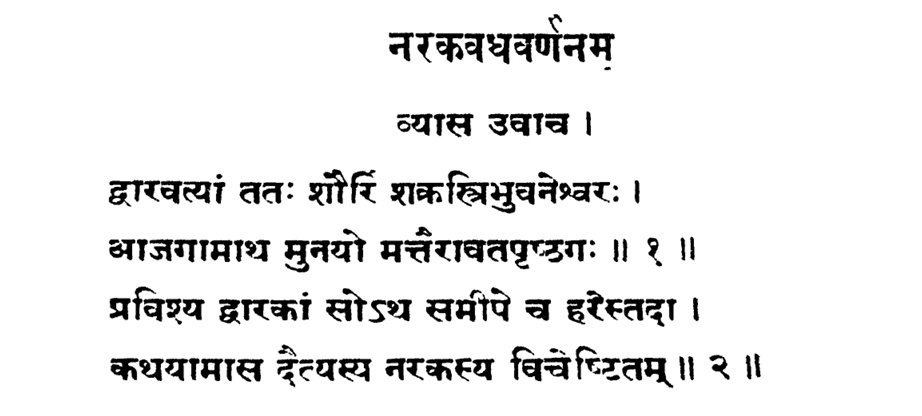
Indra identifies Naraka, the son of Bhumi as the king of Pragjyotisha who harasses and destroys all living beings.
Indra says to Krishna that after killing many devas, siddhas & rajas; Naraka imprisoned their daughters in his palace. (2)
Indra says to Krishna that after killing many devas, siddhas & rajas; Naraka imprisoned their daughters in his palace. (2)
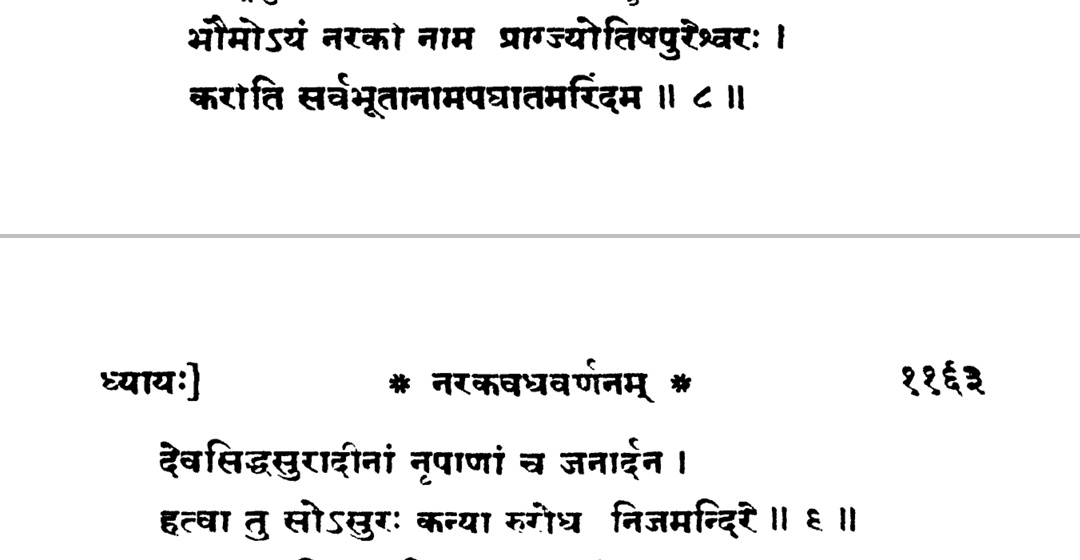
Indra complains to Krishna on how Naraka took away by force the famed umbrella of Pracetas, on how he removed Maniparvata, peak of Mandara & took away by force the earrings of Indra's mother Aditi.
Indra then implores Shri Krishna to take action against Naraka. (3)
Indra then implores Shri Krishna to take action against Naraka. (3)
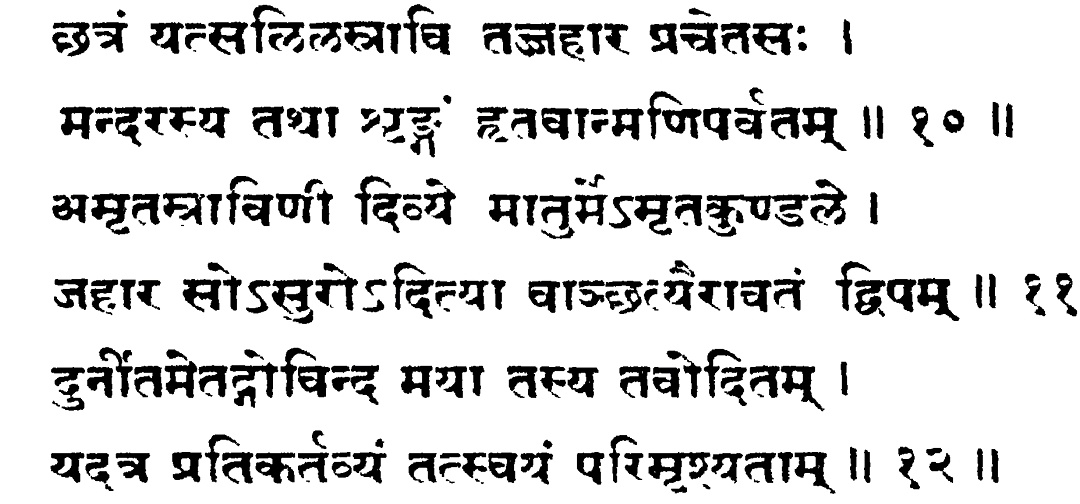
Krishna assures Indra that he'll take action. Along with with Sathyabhama on his side, Krishna mounts the Garuda & flys towards Pragjyotisha, the capital of Narakasura.
The last verse describes Naraka's capital as a terrible place full of nooses everywhere. (4)
The last verse describes Naraka's capital as a terrible place full of nooses everywhere. (4)
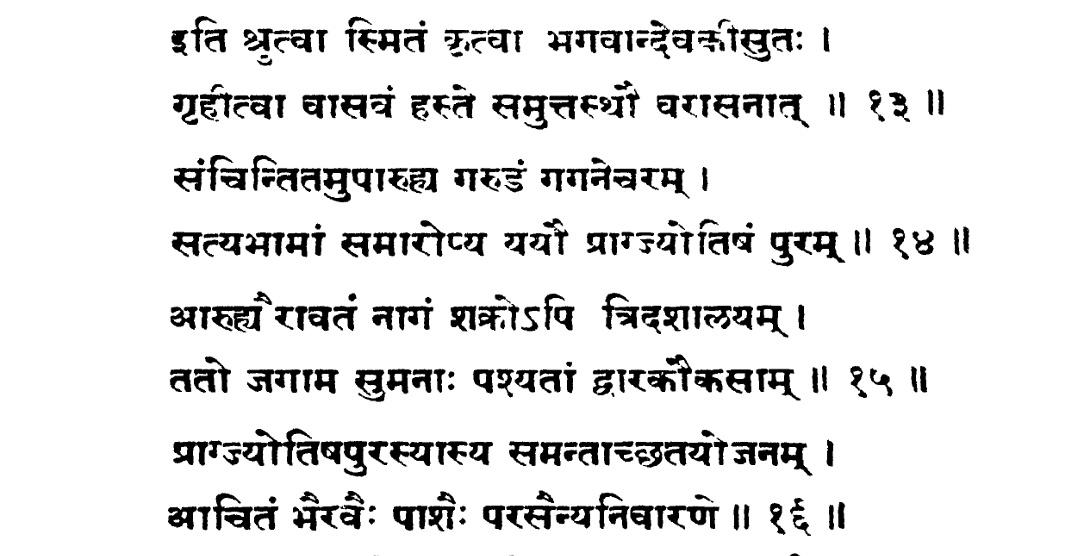
Krishna proceeds to use the Sudarshana Chakra to cut off all those nooses. In the process he also slays asura Mura & his 7000 sons (5) 

The below verses describe the slaying of Narakasura. In the battle Krishna kills a 1000 asuras. Wielding the Sudarshana Chakra, Krishna splits Narakasura into two halves & kills him.
After Naraka's killing, Bhumidevi approaches Shri Krishna with Aditi's earrings. (6)
After Naraka's killing, Bhumidevi approaches Shri Krishna with Aditi's earrings. (6)
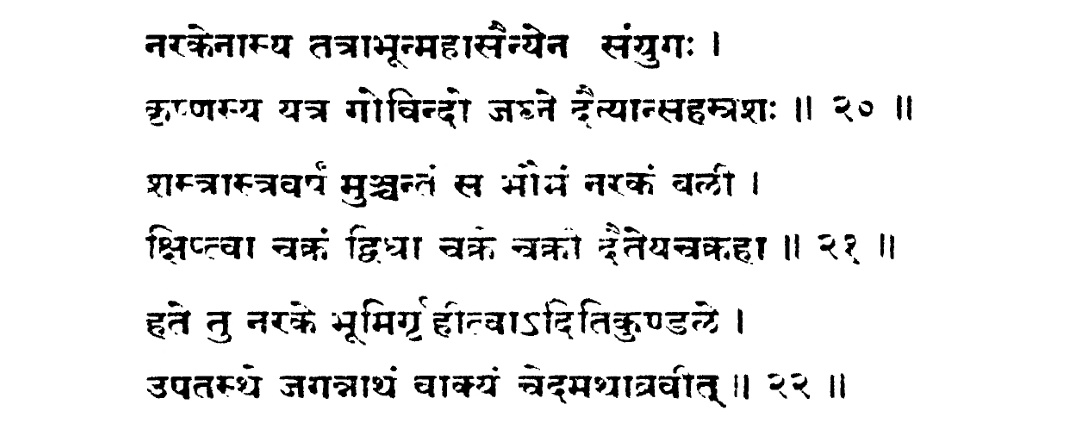
After retrieving Aditi's earrings, Shri Krishna proceeds to liberate 16,100 girls taken as prisoners by Narakasura.
Along with the girls, Krishna also frees 6000 elephants, a mighty number of Kambhoja horses.
Krishna immediately has them all transported back to Dwaraka. (7)
Along with the girls, Krishna also frees 6000 elephants, a mighty number of Kambhoja horses.
Krishna immediately has them all transported back to Dwaraka. (7)
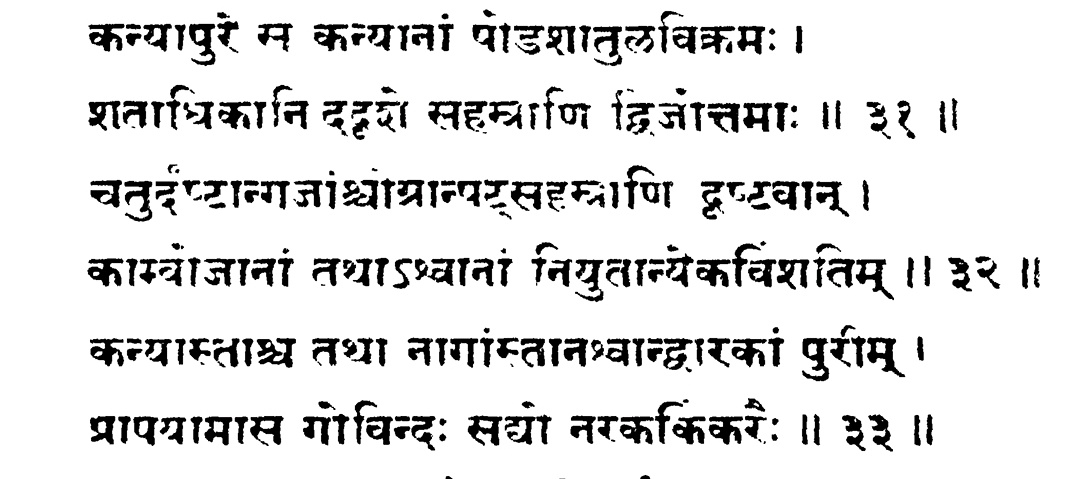
Krishna also retrieves the umbrella of Varuna & the mountain of Maniparvata. He along with Sathyabhama mount the Garuda & fly towards Swarga to restore the earrings to Aditi.
This concludes the story of slaying of Narakasura.
This is the significance of Naraka Chaturdasi. /end
This concludes the story of slaying of Narakasura.
This is the significance of Naraka Chaturdasi. /end
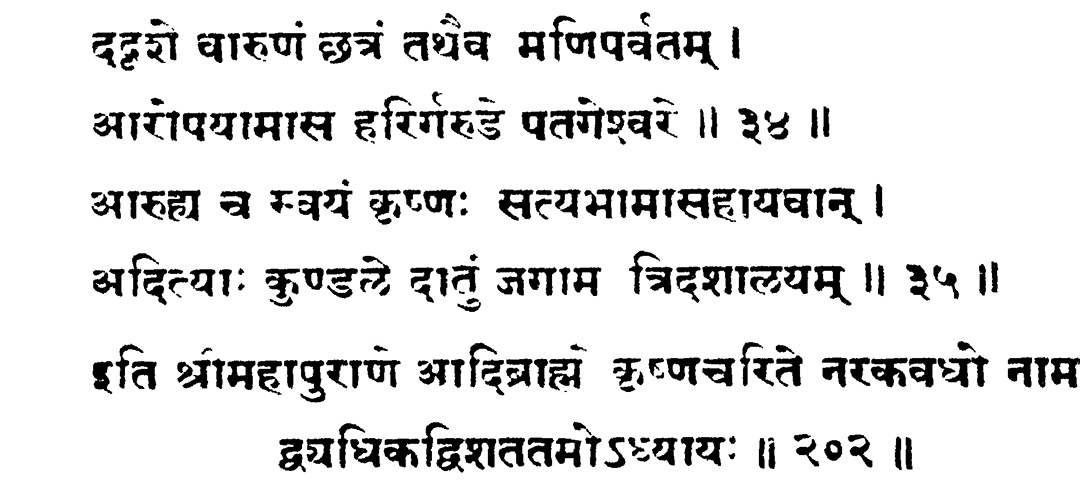
• • •
Missing some Tweet in this thread? You can try to
force a refresh


